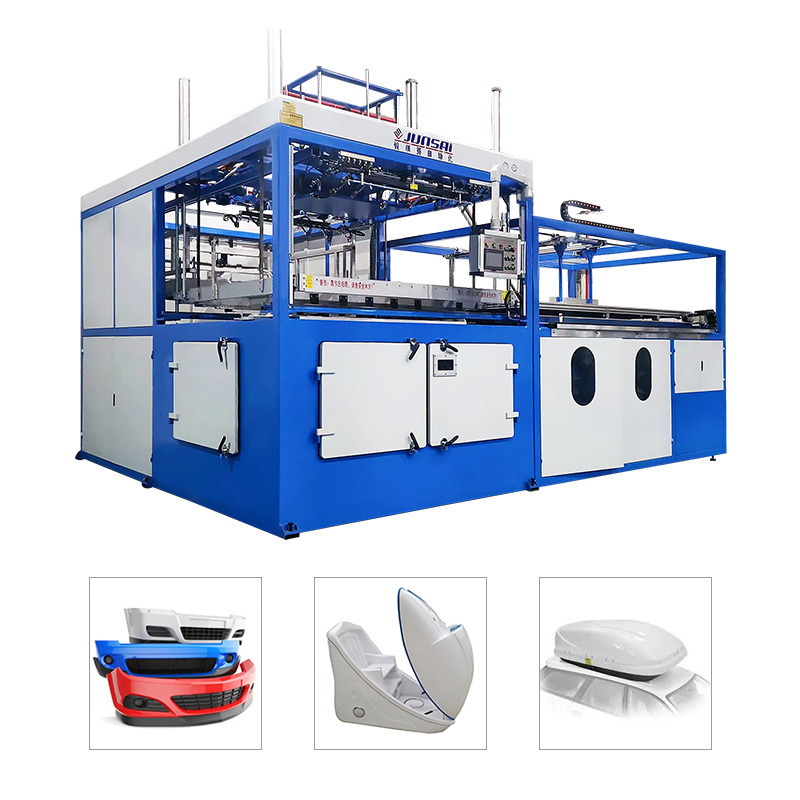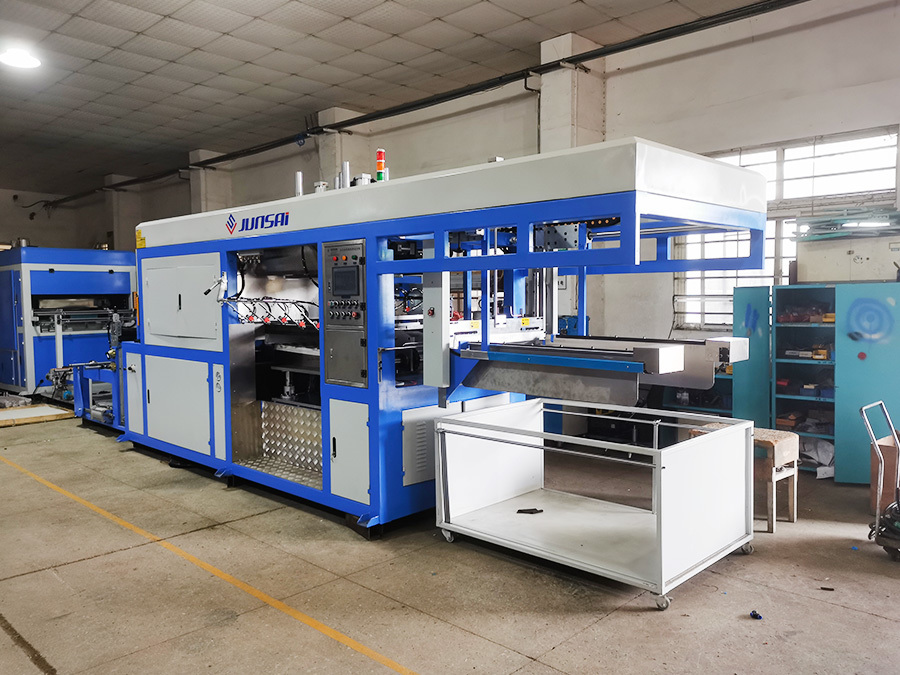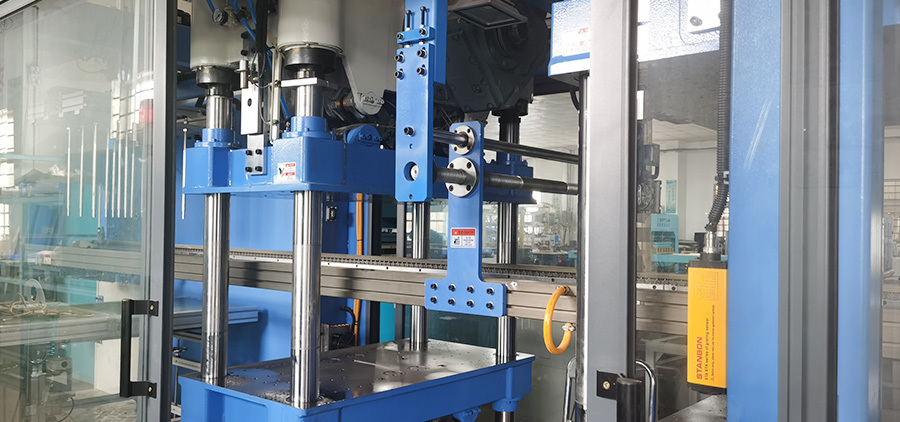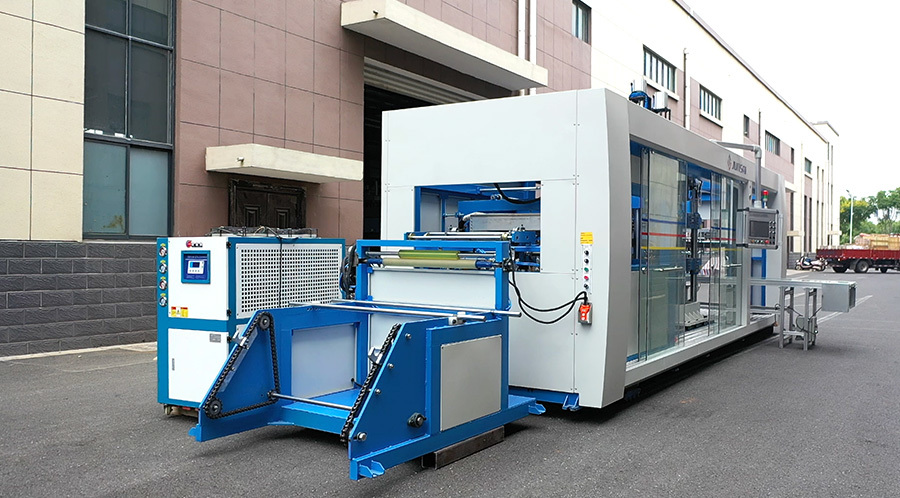The Power of Industrial Vacuum Formers for Innovative Packaging Solutions
2025-04-28
In the ever-evolving world of manufacturing, businesses continually seek ways to enhance their efficiency and reduce costs. One technology that has risen to prominence is the industrial vacuum former. This innovative process offers manufacturers a practical solution for creating a wide variety of packaging items quickly and cost-effectively. Understanding how vacuum forming works and its applications can help businesses unlock its potential for superior packaging solutions.

What is Vacuum Forming?
Vacuum forming is a manufacturing process that involves heating a thermoplastic sheet until it becomes pliable and then stretching it over a mold. A vacuum is applied to remove air, allowing the heated material to conform to the shape of the mold. This technique is highly effective for producing a range of packaging products, from simple blisters to complex custom designs.
Types of Vacuum Forming
There are several types of vacuum forming processes, including:
1. **Single-Sided Vacuum Forming**: The simplest form, where a single sheet is used, is ideal for creating basic shapes.
2. **Double-Sided Vacuum Forming**: Involves two sheets of material, allowing for more intricate designs.
3. **Pressure Forming**: Combines vacuum and pressure, enhancing detail and precision in the final product.
How Does Vacuum Forming Work?
The **vacuum forming process** can be broken down into several key steps:
1. **Material Selection**: Choosing the appropriate thermoplastic material based on the desired properties of the final product, such as clarity, strength, and chemical resistance.
2. **Heating the Thermoplastic Sheet**: The selected thermoplastic sheet is heated uniformly until it reaches a pliable state.
3. **Mold Placement**: The heated sheet is positioned over a pre-prepared mold, which can be made of various materials, including aluminum, wood, or composite materials.
4. **Applying Vacuum**: A vacuum is created beneath the sheet, drawing it down onto the mold, allowing it to take shape.
5. **Cooling and Removal**: After the material has cooled and hardened, it is removed from the mold, ready for trimming and further processing.
The Importance of Mold Design
The design of the mold is crucial, as it directly impacts the quality and accuracy of the final product. High-quality molds can significantly reduce production time and costs while enhancing the durability and aesthetic appeal of the packaging.
Advantages of Vacuum Forming in Packaging
Utilizing vacuum forming for packaging solutions offers numerous advantages:
1. **Cost-Effective Production**: Vacuum forming is generally less expensive than other molding techniques, such as injection molding, especially for low to medium production runs.
2. **Versatility**: This process allows for a wide range of materials and shapes, catering to diverse packaging needs across various industries.
3. **Speed and Efficiency**: The production cycle is relatively quick, enabling manufacturers to meet tight deadlines and scale operations rapidly.
4. **Eco-Friendly Options**: Many thermoplastics used in vacuum forming are recyclable, making it an environmentally friendly choice for packaging.
5. **Customization**: Manufacturers can easily create custom designs, enhancing brand recognition and product differentiation.
Applications of Vacuum Forming in Various Industries
Vacuum forming finds uses across multiple sectors, including:
1. **Food Packaging**: Ideal for creating containers and trays that keep food fresh and secure.
2. **Electronics**: Used in producing packaging that protects sensitive electronic components.
3. **Medical Devices**: Provides packaging that meets stringent hygiene and safety standards.
4. **Consumer Products**: Commonly used for blisters and clamshells that showcase products while ensuring protection.
5. **Automotive**: Employed in creating interior components and packaging for automotive parts.
Case Study: Vacuum Forming in Food Packaging
In the food industry, vacuum forming is particularly beneficial due to its ability to create effective barriers against moisture and contaminants. Companies can produce custom trays that fit products perfectly, minimizing movement during transport and extending shelf life.
Choosing the Right Industrial Vacuum Former
Selecting the appropriate vacuum former is crucial for achieving optimal results. Consider the following factors:
1. **Production Volume**: Assess your production needs and choose a machine that can handle your output requirements.
2. **Material Compatibility**: Ensure the vacuum former can accommodate the types of thermoplastics you plan to use.
3. **Mold Design Capabilities**: Look for machines that offer flexibility in mold design and customization.
4. **Automation Features**: Automated features can enhance efficiency and reduce labor costs.
Top Brands to Consider
Some leading brands in the industrial vacuum forming space include:
- **Formech**: Known for its robust, high-quality machines suitable for various applications.
- **Thermoform**: Offers customizable solutions for both small and large-scale production.
- **Molded Dimensions**: Focuses on high-precision vacuum forming solutions tailored to client needs.
Maintenance and Optimization of Vacuum Formers
To ensure longevity and performance, regular maintenance of vacuum forming machines is essential. Here are some best practices:
1. **Routine Inspections**: Conduct regular checks on heating elements, vacuum pumps, and electrical components.
2. **Cleaning**: Keep molds and machine parts clean from residue buildup to maintain quality and efficiency.
3. **Replacement of Parts**: Timely replacement of worn-out components can prevent costly downtimes.
4. **Operator Training**: Ensuring that operators are well-trained can significantly reduce operational errors and enhance productivity.
The Future of Vacuum Forming Technology
As technology advances, the vacuum forming industry is poised for significant innovations. Emerging trends include:
1. **Sustainable Materials**: A growing trend towards using biodegradable and recyclable materials will further enhance the eco-friendliness of vacuum forming.
2. **Smart Manufacturing**: Integrating IoT and automation in vacuum forming processes will increase efficiency and product quality.
3. **3D Printing Integration**: Combining vacuum forming with 3D printing allows for rapid prototyping and design flexibility.
Industrial vacuum forming stands as a powerful solution for manufacturers seeking efficient, cost-effective packaging options. With its versatility, speed, and capability for customization, vacuum forming continues to revolutionize the packaging landscape across various industries. By understanding its benefits, applications, and best practices, businesses can unlock the full potential of vacuum forming technology, paving the way for innovative packaging solutions that meet the demands of today’s market. Embracing this technology not only enhances operational efficiency but also positions companies as leaders in sustainable and effective packaging solutions.
Keywords:
Related information
Maximizing Efficiency with Tabletop Vacuum Forming Machines: A Comprehensive Guide
2025-05-01
Why Your Business Needs a Plastic Vacuum Forming Machine for Sale
2025-04-30
Understanding Vacuform Machines: A Comprehensive Guide
2025-04-29












